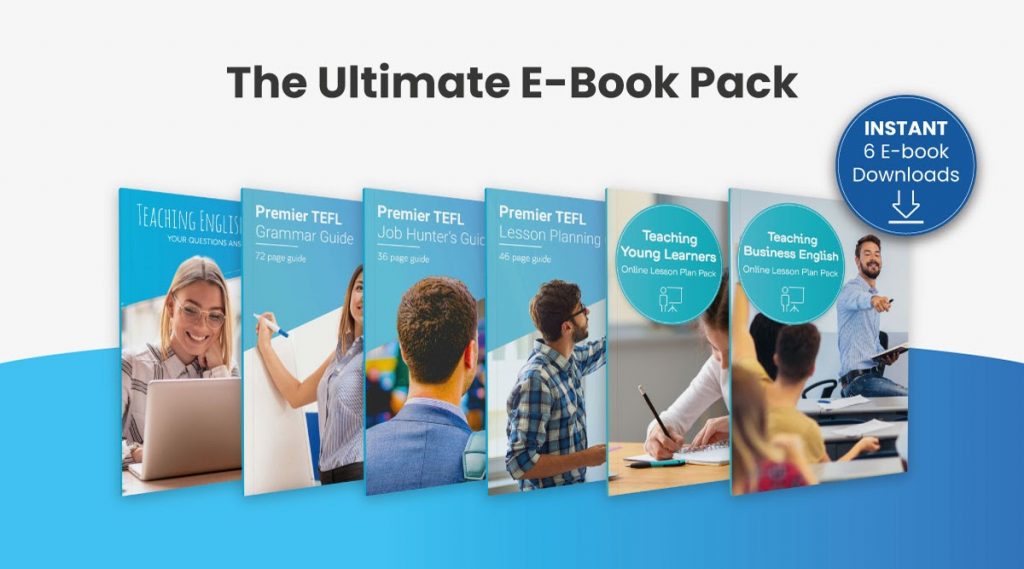If you’re looking for information about how to teach online independently, then you’re in the right place. Teaching online is a good option for many. Maybe you’re looking for something to do during the pandemic, maybe you’re looking for experience before teaching abroad, or maybe you’re, well, a teacher. Online teaching can be viewed as a short-term or a long-term option, a part-time or full-time job, and can be a great fit either way. While many teachers will apply to work for e-learning companies, another option is teaching for yourself independently.
You might be wondering how you would get started with something like this. Is it simply a case of spamming everyone with emails or Facebook posts telling them what you offer? No. There’s more to it, obviously. You need to consider many factors, such as what materials you’ll use (if you’ll use any) and how you’ll share them. What software will facilitate the lesson? How you will be paid. Start-up costs and so on. First off, it’s important to recognize why you should teach online independently.
Should I Teach Online Independently?
Now I’m not here to scream inspirational quotes like “be you, do you, for you,” but maybe you want some self-autonomy. Maybe you’re ambitious, maybe you want to be your own boss, and although choosing your own schedule for online teaching companies is nice, sometimes it isn’t enough. As an independent teacher, you’ll be able to work with total freedom, leading your own personally designed lessons on your own time. You could choose the time that’s best for you and even teach specific subjects. This is an advantage as you can cater to a larger and more diverse network of students or focus on lucrative niche ones.

» Unexpected Perks of Teaching English Online
Reveal Yourself!
Additionally, you will be able to combine your teaching persona with your entrepreneurial qualities to run the business you want. We like to think we’ve coined the perfect phrase to describe you… Reveal yourself “Entrepeneachers” #portmanteau. You will be in full control and create your own policies regarding bookings, cancellations, pay and so forth to give your business the infrastructure it needs. If you’re sick of companies determining your value based on a single interview, you have the ability to charge what you believe your time and lessons are worth! That doesn’t mean you can be Dr. Evil and ask for 100 billion dollars, but if you’re carefully planning and delivering high-quality lessons, why should you be modest?

While teaching online independently, you won’t be restricted by a specific syllabus or courseware that is enforced by companies. Some of these syllabuses can be extremely dull, and this is your chance to demonstrate your teaching pizzazz. Liberate yourself by teaching genuinely interesting and engaging lessons, and tailor your lessons to accommodate your student’s needs. Additionally, you have the freedom to create your own lesson objectives for the student and place more emphasis on conversational English or grammar depending on your students’ desires.
Software for Virtual Classrooms
Before you jump into it and start marketing yourself like Steve Jobs with your black turtleneck and blue jeans, you need to consider what platforms you’ll use. You’ll have to think carefully to create the perfect virtual classroom for you and your students, and this will be influenced by the software that you choose. If you will be teaching teenagers or adults, then you shouldn’t have to worry too much about animation or interaction tools that the software offers. However, if you are teaching young learners and beginners, it’s good to use a teaching platform as it will have learner management tools built in to optimize your lesson. Young learners won’t have the capacity to stare at the teacher’s face and converse all lesson long.
»7 Ways to Keep Online ESL Learners Engaged
Important Tools for Teaching Online
A virtual classroom software gives you the ability to interact with students and use tools to simulate the in-person classroom experience in your preferred location. Both teacher and student will be able to converse and create discussions with the help of live video streaming. Additionally, screen-sharing will allow the sharing of materials, videos, demonstration of activities and rewards. A virtual classroom software is integral to your independent online teaching. Can you imagine a car without wheels, toast with no butter, a canoe without a paddle? You need to consider which e-learning tools your classroom needs before you begin your adventure. Teachers will make use of some tools more than others, but here are some of the important tools:
- Whiteboard – The unsung hero of the classroom, it’s an important tool to allow your student to complete any writing and drawing activities.
- Screen sharing – Whether you’re sharing material or demonstrating an activity, screen sharing is crucial to guide the student through the lesson.
- Surveys / Polls – Test your student’s knowledge with interactive quizzes!
- Break-out rooms – Students can gather in small groups to complete activities using break-out rooms.
Comparing Software
You can use many websites to compare the different software and find the perfect one for you. More on this later. You might look for the software with the best video streaming, while others will look for one that boasts ease of use or file sharing. Of course, everyone will have different requirements for different needs. If budget is a concern, you can opt for inexpensive or even free software to conduct your lessons. Although they’re low cost, they can be extremely effective. You know what they say, “if it ain’t broke, don’t fix it”. Let’s start with some freebies!
Free Software To Teach English Online Independently
Zoom
Zoom is a household name at this point, and it’s a software that made 2020 its stepping stone. You may have used it to take part in your aunt’s boring family quiz, but it’s a viable (and popular) option to conduct lessons. Chosen by millions as the perfect platform to conduct business meetings, it is secure and reliable. When compared to other platforms, Zoom boasts ease of use, support quality, and classroom tools such as whiteboard, surveys, hand raising, and more. It can create an interesting classroom, here is the pricing structure;
-
- Free: You can conduct 1:1 lessons for as long as you want, and group lessons for 40 minutes.
- Pro: For £9.99/€11.99 a month (paid annually), you can host group lessons for up to 100 participants for as long as you want.
BigBlueButton
BigBueButton is a free software for online learning, with the objective of facilitating a high-quality educational experience from wherever you are. Having originated at a university, it possesses all the tools to create the perfect online virtual classroom. There is a wide range of tools, from a multi-user whiteboard, breakout rooms for group collaboration, polls, and more. Lessons can be synchronous or asynchronous, as you can record your lessons for students to review afterward.
Adobe Connect
is a secure and versatile software that caters to your online teaching needs for free. Adobe utilizes advanced online teaching methods to increase student participation and sustain productivity. Customize your own classrooms to appeal to the right students, and take interactivity to a whole new level using quizzes, polls, games, simulations and other useful tools. The free version allows you to do all the previously mentioned activities but lacks interactive recordings and a large number of group participants. For this reason, Adobe is more suitable if you’re looking for a budget option for 1-1 lessons rather than group lessons.
-
- Free: Teach classes with up to three participants
- $50 per month: Allows you to include up to 25 participants and enables interactive recordings.
Google Meet
Also known as Google Hangouts and Google Learning are free and accessible for anyone with a Google account. When you combine these apps, you have the ability to create a single classroom or create multiple classrooms tailored to specific subjects. With constant developments, Google Classroom is always offering more tools, with Q&A, hand raising, breakout rooms and attendance tracking to be launched soon. You can schedule online meetings and announcements through the calendar. Or add pre-reading or assignment materials in particular classrooms for your students and track their grades in the Grades Tab. For security reasons, you will have to sign up to ‘G Suite for Education’ to conduct lessons for students, but don’t worry, it’s free and solidifies your business as a reliable one.
»8 Great English Lessons Teaching Resource Websites
Explore!
There is a whole world (of software) out there. There will be hundreds of platforms out there that you can navigate. Filter through them by price, rating, or priority features to identify which is for you. Of course, many of the free options will lack premium tools or facilities, however, if they provide you with enough space to communicate your lessons effectively, why spend more money? Use G2’s website to compare different software and narrow down your search to find the perfect online virtual classroom.
Treat It Like a Business with Learner Management Systems
It’s a good point that if something good is free, why should you change it up? But it is also true that you gotta spend money to make money. If you’re in this for the long run, you should consider investing in a learner management system, especially if you want to run your English lessons like a business. Capterra allows you to compare various online tutoring softwares and also different Learning Management System softwares to choose the right option to give your service and brand a good infrastructure.
What is a Learning Management System, and Should I Get One?
Think of tutoring softwares as the middle man. The messenger. The glue that holds the world together. Specifically, your teaching world. They allow you to communicate with students and their parents, track grades, attendance, payments, schedules and many more items that would otherwise give you a headache. Examples vary from TutorBird ($12.95 per month) to Acuity Scheduling ($15 per month). Both of these manage the fundamental aspects of a tutoring business. They’ll provide your company with the structure that you need, and they are two of many examples which you can find on Capterra’s website. Be sure to consider every aspect of your requirements if you are purchasing a software subscription.
Material Sharing
If you want your students to prepare for lessons in advance or complete homework, you can share files that contain learning materials. Cloud-based tools accelerate productivity by allowing materials to be shared. It also makes materials accessible for students wherever they are, whether they’re on their pc or their mobile.
Google Drive
On Google Classroom, you can create a folder for your materials and upload them to Google Drive for students to see. Turn ‘link sharing’ on, and students can access these materials once they have the link. This means only the right students have access to the right materials. This way, you can organize your materials into activities, levels, and however else you want. Upload these to Google Classroom to ensure your classroom has no shortage of versatile content. If you are working with Chinese students primarily, check to see if they will have access to Google via a VPN.
DropBox
The popular file hosting service makes communication and collaboration easier as you can share files from any device with others for free. It’s a helpful tool for both teachers and students. Teachers can upload syllabuses, worksheets, or assignments onto DropBox, while students can submit files into specific assignment folders. Invite multiple students who can collaborate to complete a group project on your chosen file.
Microsoft OneDrive
Reduce admin time with this simple solution that brings the whole classroom together. Teachers and students can store and protect files, allowing the right people to access them from anywhere. Not only can you access materials from anywhere, but you can edit files offline. They’ll be updated once you restore the connection. This app makes the process of delivering, tracking, and documenting lessons much easier.
How Will I Get Paid as an Independent Online English Teacher?
But, I won’t be doing this for free, will I? Of course not. You’ll be earning all the money you need to feed your cat or buy all those clothes on your ASOS account. Assuming that most of your students will be from overseas, you need to consider a few options to accept payment.
You should opt for an international payment system making the entire process seamless for you and your students. It will minimize any fees that you will lose due to foreign transactions or currency exchange rates. Here are a few easy and reliable options:
PayPal
I’m going to assume that you already have PayPal, because who doesn’t these days? This payment system has established itself as one of the most secure and easiest to use when it comes to transactions. With Asian countries like Vietnam and China having a closed currency (i.e. not allowing their currency to leave the country) PayPal enables students to make payments through currency conversion.
Revolut
You can use Revolut to make and receive payments virtually on a mobile app. One of its biggest advantages is the ability to accept different currencies. Not only this, but you can switch currencies whenever you want. This allows you to make and accept payments without any significant international fees.
Payoneer
Payoneer caters to freelancers as well as business owners, and it allows you to make international transactions. In fact, it was created to facilitate overseas payment. There is a reason that many reputable E-learning companies such as DaDa and Palfish use Payoneer. It speaks for itself when companies that employ thousands of online ESL teachers use this as its preferred payment method. It’s easier, cost-effective, and reliable.
Do Things Your Way
Ultimately, teaching English online independently is advantageous because it allows you to do it your way. You are not under any obligation to anything other than your own policies. Having said that, there are many things that you should consider, with some aspects needing more thought than others. You need to charge an amount that makes it sustainable (for yourself and the student). Select a platform that facilitates engaging lessons for your students. With a strong infrastructure, you can expect to attract more students to your classes. You can also earn a salary that you deserve, and create a vast network that gains momentum and exposure in the e-learning environment.
Do you teach online already? What’s are your favorite tools and platforms for teaching online? Let us know in the comment section below!
The post How to Teach Online Independently & What Free Software to Use appeared first on Premier TEFL.







